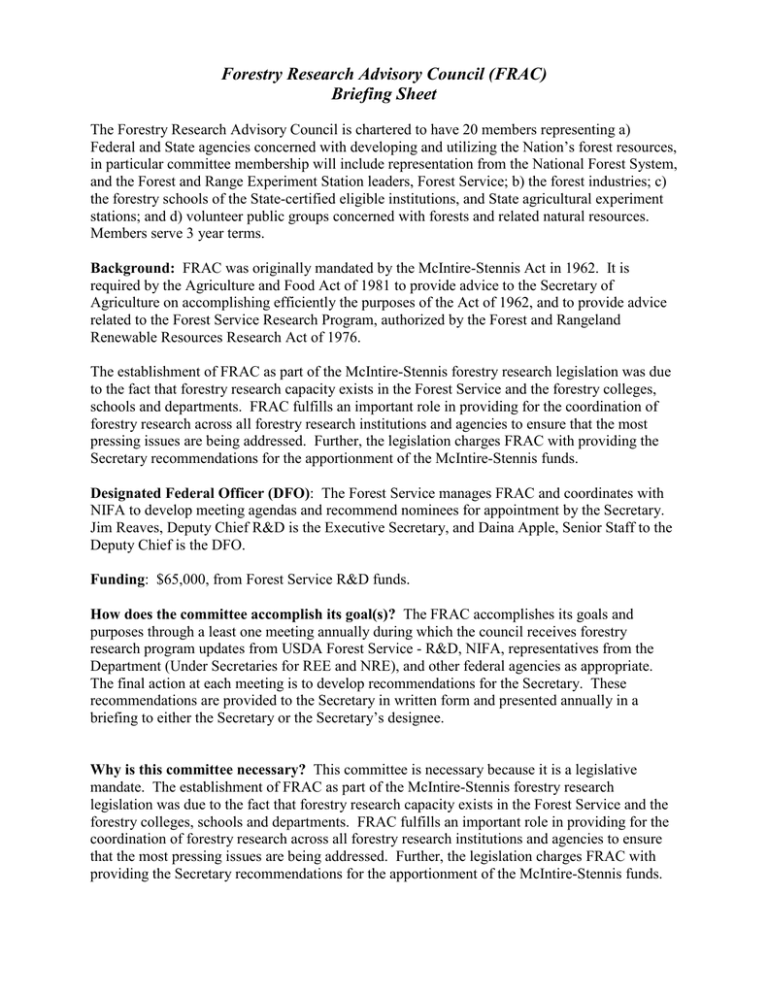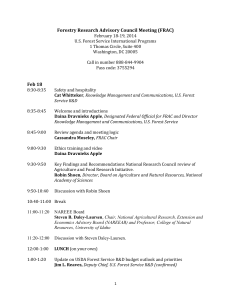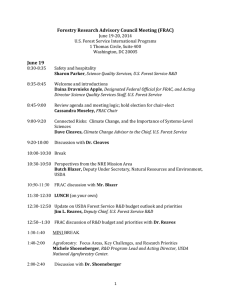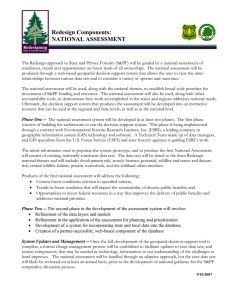Forestry Research Advisory Council (FRAC) Briefing Sheet
advertisement

Forestry Research Advisory Council (FRAC) Briefing Sheet The Forestry Research Advisory Council is chartered to have 20 members representing a) Federal and State agencies concerned with developing and utilizing the Nation’s forest resources, in particular committee membership will include representation from the National Forest System, and the Forest and Range Experiment Station leaders, Forest Service; b) the forest industries; c) the forestry schools of the State-certified eligible institutions, and State agricultural experiment stations; and d) volunteer public groups concerned with forests and related natural resources. Members serve 3 year terms. Background: FRAC was originally mandated by the McIntire-Stennis Act in 1962. It is required by the Agriculture and Food Act of 1981 to provide advice to the Secretary of Agriculture on accomplishing efficiently the purposes of the Act of 1962, and to provide advice related to the Forest Service Research Program, authorized by the Forest and Rangeland Renewable Resources Research Act of 1976. The establishment of FRAC as part of the McIntire-Stennis forestry research legislation was due to the fact that forestry research capacity exists in the Forest Service and the forestry colleges, schools and departments. FRAC fulfills an important role in providing for the coordination of forestry research across all forestry research institutions and agencies to ensure that the most pressing issues are being addressed. Further, the legislation charges FRAC with providing the Secretary recommendations for the apportionment of the McIntire-Stennis funds. Designated Federal Officer (DFO): The Forest Service manages FRAC and coordinates with NIFA to develop meeting agendas and recommend nominees for appointment by the Secretary. Jim Reaves, Deputy Chief R&D is the Executive Secretary, and Daina Apple, Senior Staff to the Deputy Chief is the DFO. Funding: $65,000, from Forest Service R&D funds. How does the committee accomplish its goal(s)? The FRAC accomplishes its goals and purposes through a least one meeting annually during which the council receives forestry research program updates from USDA Forest Service - R&D, NIFA, representatives from the Department (Under Secretaries for REE and NRE), and other federal agencies as appropriate. The final action at each meeting is to develop recommendations for the Secretary. These recommendations are provided to the Secretary in written form and presented annually in a briefing to either the Secretary or the Secretary’s designee. Why is this committee necessary? This committee is necessary because it is a legislative mandate. The establishment of FRAC as part of the McIntire-Stennis forestry research legislation was due to the fact that forestry research capacity exists in the Forest Service and the forestry colleges, schools and departments. FRAC fulfills an important role in providing for the coordination of forestry research across all forestry research institutions and agencies to ensure that the most pressing issues are being addressed. Further, the legislation charges FRAC with providing the Secretary recommendations for the apportionment of the McIntire-Stennis funds.






